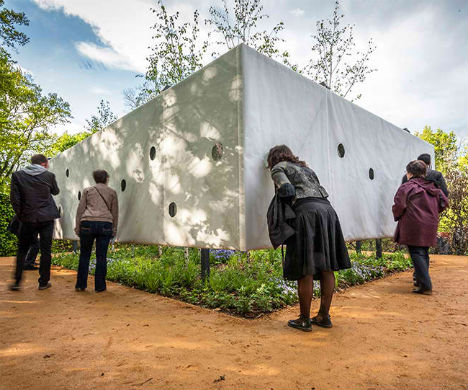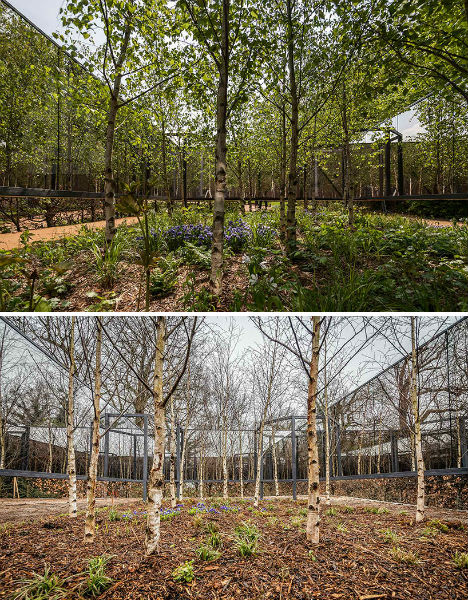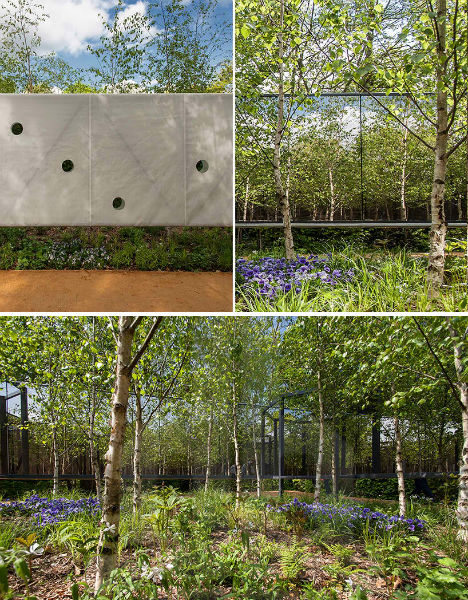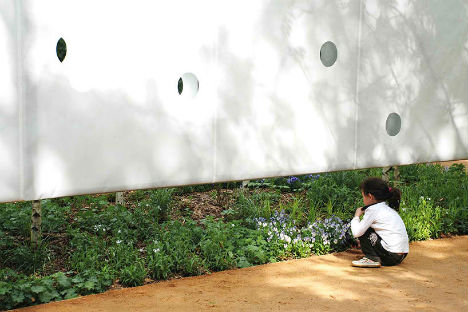Peering through a hole in the hovering white skin of an unusual installation at the 22nd International International Garden Festival of Chaumont Sur Loire, France, seems to transport the viewer into a different place altogether. What could not be more than a few square meters, judging by the outside dimensions, becomes a vast forest that seemingly continues without end. Outside-In is a ‘visual paradox’ that intends to show us how relying on our senses can limit our imagination.
Designed by Meir Lobaton Corona and Ulli Heckmann architects, the installation is a white canvas box punctured with circular windows, rendering a small planted area inaccessible. But mirrors mounted inside that box reflect the few trees that are actually contained within it. The effect is enhanced in warm seasons, when the leaves are at their lushest.
“We think that all perception is locked within our body: The sense of seeing from the eyes, the sense of hearing from the ears, the sense of smelling from the nose, the sense of tasting from the mouth, and the sense of touch primarily from the hands,” say the creators. “Our garden, entitled ‘outside-in’, is conceived as a visual paradox, as device that enhances such conditions in order to make the audience realize how by relying only on sight we rely on imagination, that is to say, on interpretation.”
“‘Outside-in’ is a garden within a garden, a contemplative space, a small universe where landscape and architecture are fused to create an experience capable of raising questions rather than answering them, a live mechanism whose aim is to make us reflect on the contrast between what we know and what we see, demanding us to constantly negotiate the gap between physical reality and visual perception. It is a meditation on space, light, and the possibility of infinity as seen through the limitless reflections of a trapped narrative meticulously fitted inside a world of two-way mirrors.”



